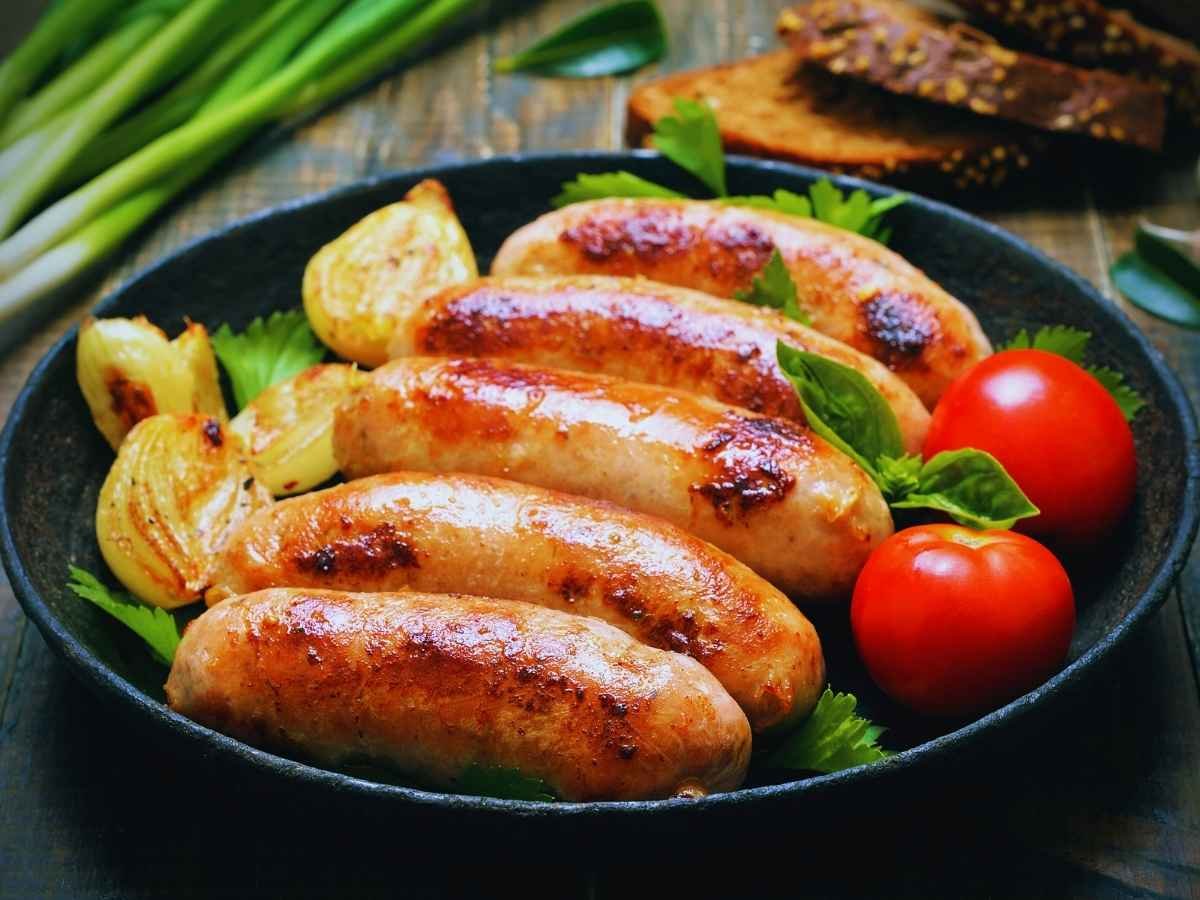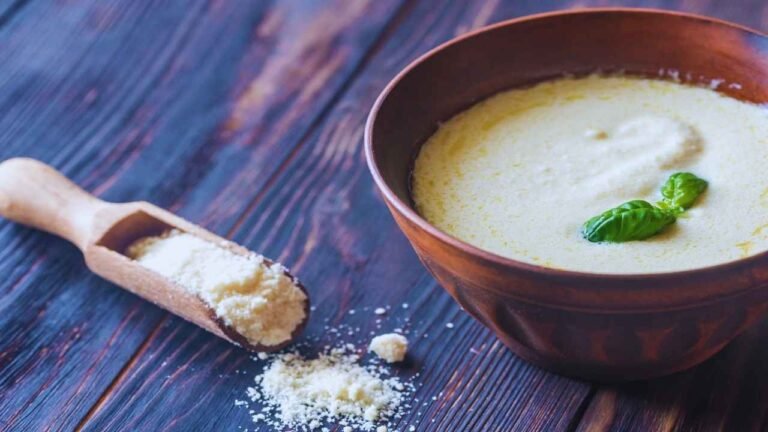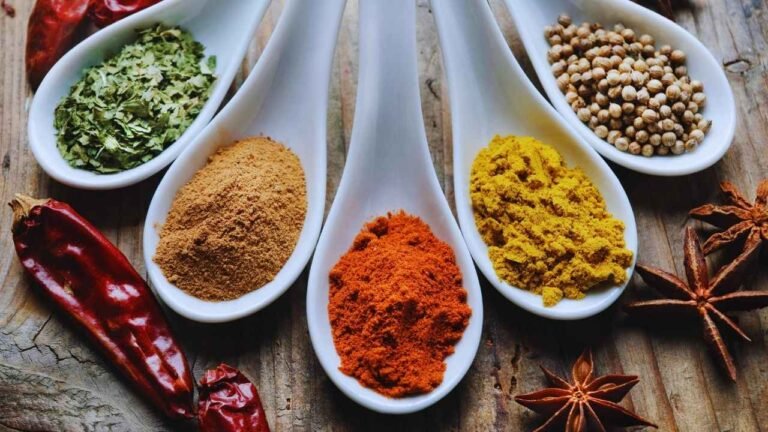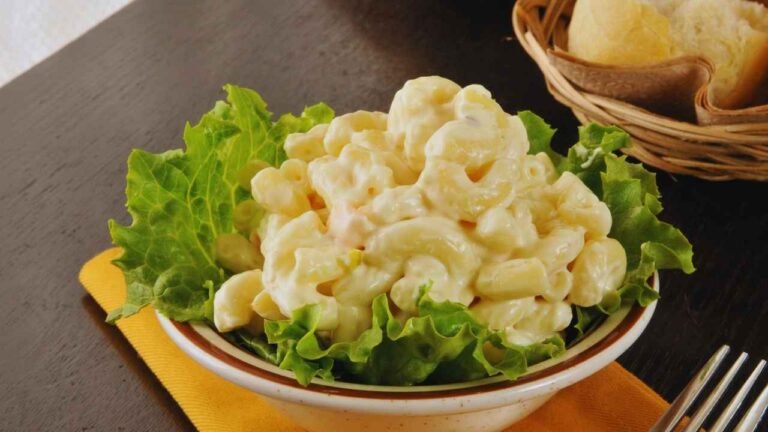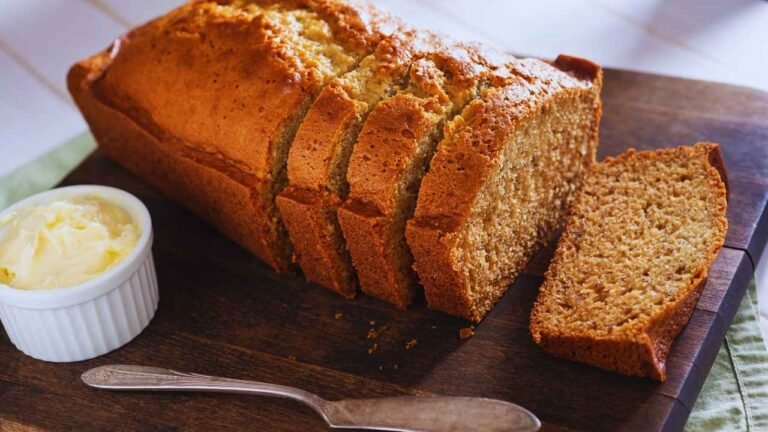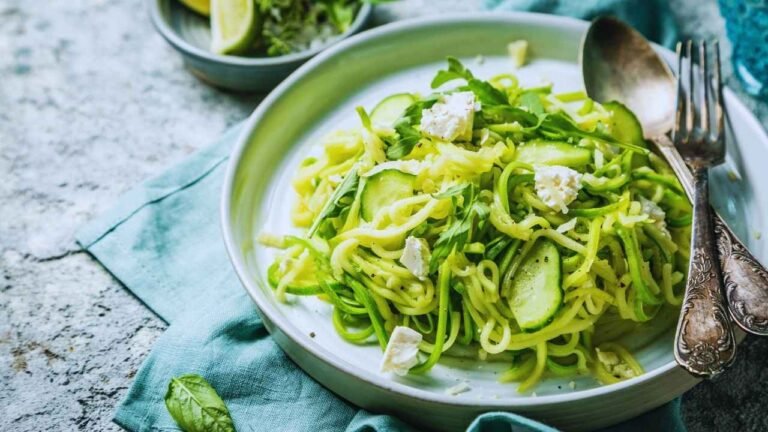Top 10 Sausage Spice Recipes You Must Try
A perfect blend of spices can change ordinary ground meat into extraordinary homemade sausage. Home cooks who create their own sausage spice recipes control flavors, adjust heat levels, and craft unique combinations better than store-bought alternatives. These spice blends help achieve restaurant-quality results in your kitchen.
Custom sausage seasoning combinations serve specific purposes and complement different meat types. Sweet and savory maple blends, herb-focused chicken varieties, and smoky barbecue combinations give home cooks endless possibilities. This piece details ten essential spice blends that include proper ratios and expert mixing techniques.
Sweet and Savory Maple Sausage Seasoning
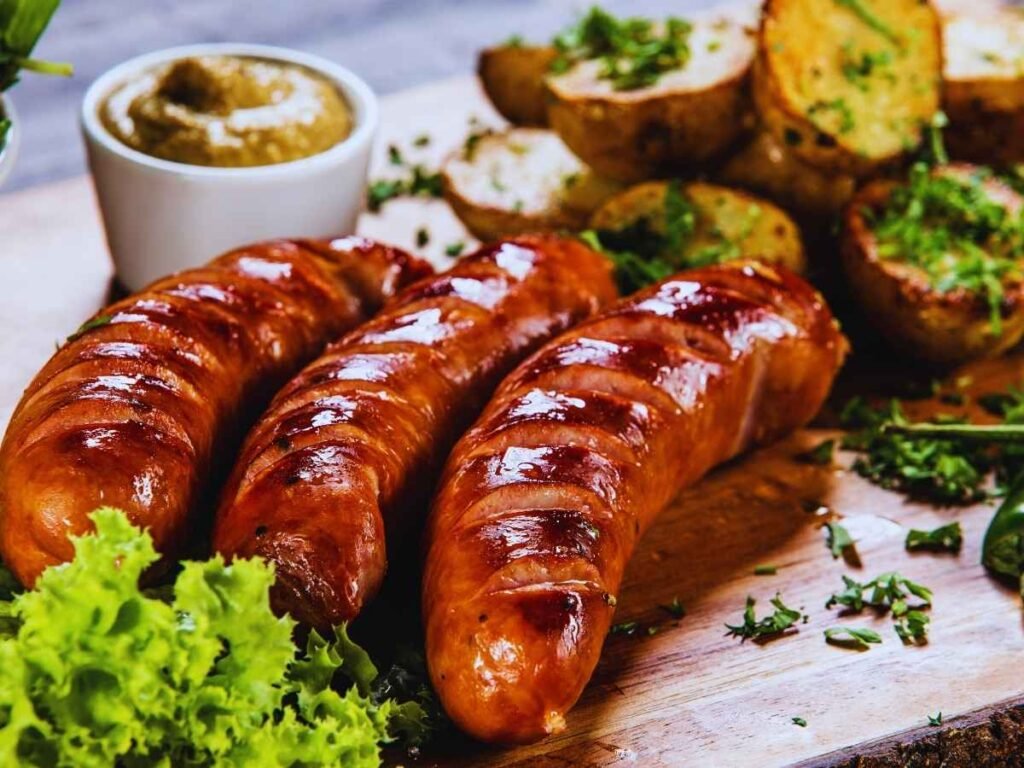
Maple syrup adds a unique sweetness to sausage seasoning and elevates ground meat into a gourmet breakfast delight. The blend masterfully pairs classic spices with pure maple syrup that results in a balanced breakfast sausage with sweet and savory notes.
Combining maple with spices
Maple and spices need careful attention to create the perfect blend. A simple maple sausage spice recipe has:
- 2 tablespoons maple syrup
- 1¼ teaspoons sea salt
- 1 tablespoon fresh thyme
- 1 teaspoon dried sage
- ½ teaspoon garlic powder
- ½ teaspoon paprika
- ¼ teaspoon black pepper
Success depends on your mixing technique. Start by breaking apart the meat and add half the seasoning mixture. Then mix in the remaining half to get even distribution. Hand mixing gives you the best control. You can also use two mixing spoons if you prefer not to touch raw meat directly.
Balancing sweet and savory notes
The perfect balance between sweet and savory flavors depends on how much maple syrup you use. Excessive sweetness overwhelms savory elements. A lack of it misses the mark completely. Sweet and hot elements must work together to create magic in your dish.
Here are some pro tips to boost your maple flavor:
- Drizzle extra maple syrup right before you flip the sausages
- Mix in red pepper flakes to create a sweet-heat balance
- Use dried herbs instead of fresh ones to pack more flavor
- A touch of fennel seed adds depth to your dish
Best meats for this blend
Fat content plays a significant role in the final product, though this maple sausage seasoning works with meats of all types. Pork stands out as the best choice because it has optimal fat content and carries flavors well. Each meat type needs specific internal cooking temperatures: 145°F for pork and 165°F for poultry.
Ground chicken or turkey serve as good alternatives to pork, but they need some adjustments. These leaner meats require extra oil to make up for their lower fat content. You can create an excellent balance by mixing ground pork with turkey or chicken. This combination keeps the meat juicy and reduces the overall fat.
The flavors develop fully after the seasoned meat rests in the refrigerator for at least three hours. Shape the patties slightly bigger than you want them because they shrink during cooking. The center should be a bit thinner than the edges to prevent what you might call the “hockey puck” effect.
Quality preservation depends on proper storage methods. A sealed container keeps the seasoned meat mixture fresh in the refrigerator for up to five days. Raw and cooked sausage patties last several months in the freezer. The patties need to thaw completely in the refrigerator overnight before cooking if frozen.
Herb-Focused Chicken Sausage Spice Mix
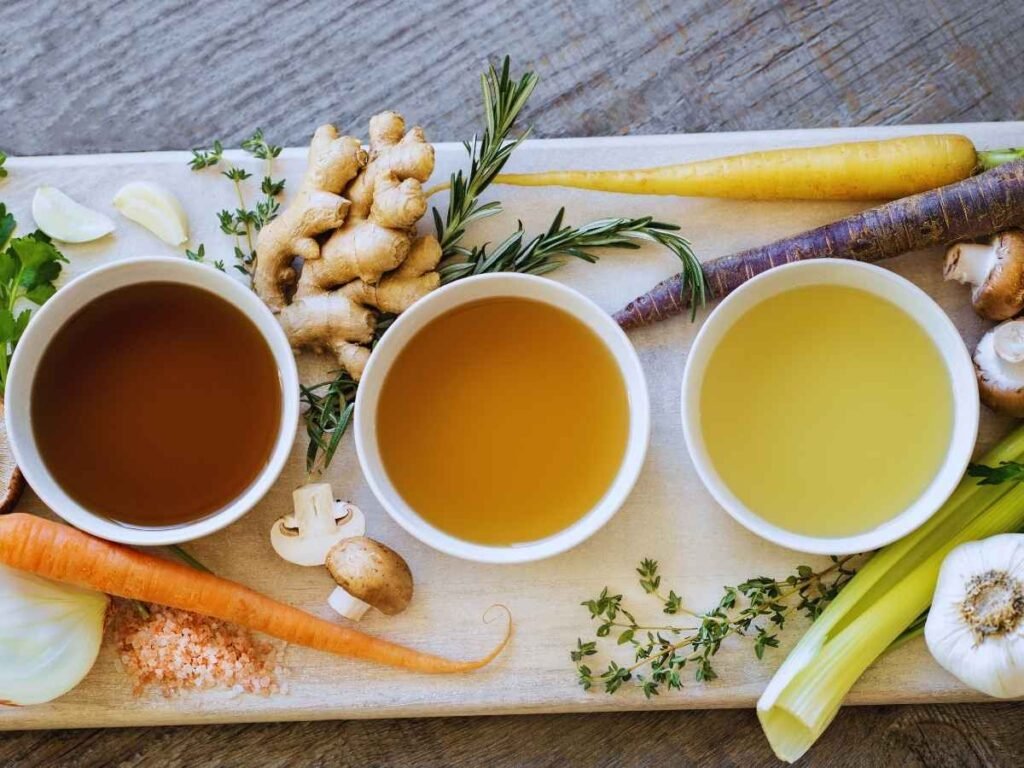
The perfect herb-focused chicken sausage needs fresh and dried ingredients balanced delicately to complement poultry’s mild nature. This versatile spice recipe offers a lighter, healthier choice. The blend of herbs and spices will raise your meal with its rich flavor profiles.
Fresh vs. dried herbs
Fresh and dried herbs substantially affect chicken sausage’s final flavor. Fresh herbs create bright, vibrant notes, and dried herbs contribute deeper, more concentrated flavors. Chicken sausage seasoning works better with certain herbs in their fresh state, while others excel when dried.
Fresh herbs best suited for chicken sausage:
- Parsley: Adds brightness and visual appeal
- Basil: Provides aromatic freshness
- Chives: Delivers subtle onion notes
- Tarragon: Contributes distinctive anise flavor
Fresh herbs need proper timing to work effectively. Their aromatic oils reach peak levels when finely chopped right before use. A general ratio suggests 20 grams of fresh basil and 5 grams of fresh parsley for every 1000 grams of chicken meat.
Dried herbs excel in longer-cooking applications and need to be added early in the process. A standard 1:3 conversion ratio applies – one part dried herbs equals three parts fresh. Dried herbs that excel in chicken sausage include oregano, marjoram, thyme, and sage.
Complementary spices for chicken
Chicken meat’s mild character makes it perfect for various spice combinations. A classic chicken sausage recipe needs these spices for each kilogram of meat:
Spice Amount Salt 18g White pepper 3g Mace 1g Coriander 1g Marjoram 1g Allspice 0.5g Adventurous cooks can try exciting variations to enhance their simple chicken sausage. Mediterranean flavors shine with dried tomatoes and fresh garlic. Spice enthusiasts might prefer a blend of harissa paste and cumin. The secret is to balance these spices carefully to complement chicken’s natural taste.
Creating a lighter flavor profile
Chicken sausage works great with lighter flavor profiles and health-conscious consumers love it. You need to think over seasoning carefully because chicken has less fat. Adding lemon juice powder and dehydrated onion builds depth without making it heavy.
Well-chosen seasonings create bright flavors that keep the mechanisms of savory notes needed in good sausage. This perfect balance makes chicken sausage ideal for summer grilling and you can enjoy it all year round.
These professional techniques help you achieve the perfect lighter profile:
- Use white pepper instead of black to get subtle heat
- Fresh garlic gives a cleaner flavor than powder
- A touch of allspice adds complexity without weight
- Sage and marjoram bring traditional sausage notes
It’s worth mentioning that chicken’s lower fat content affects how it carries flavor. The optimal approach involves:
- Mix dry spices before adding them to meat
- Add fresh herbs last to keep their volatile oils
- Let the seasoned mixture rest so flavors develop
- Test small batches before making large quantities
Homemade chicken sausage lets you control flavor intensity and health aspects. You can use white meat for an extra-lean option or dark meat for richer flavor. The spice combinations adjust easily while keeping a lighter profile than traditional pork-based sausages.
Smoky Barbecue Sausage Rub

This smoky barbecue sausage rub blends essential spices with time-tested smoking techniques. The result delivers deep, complex flavors. The seasoning blend uses ingredients that enhance sausages of all types and creates an authentic barbecue taste.
Selecting the right paprika
Great barbecue sausage rubs start with the perfect paprika choice. Hungarian paprika stands out as a top pick for sausage making. Its 120 ASTA rating delivers reliable flavor and noticeable heat. The spice brings earthy notes to your mix and adds a subtle sweetness with warm, smoky undertones that boost the overall taste profile.
Spanish paprika (pimentón) comes in three distinct varieties:
- Pimentón dulce (mild)
- Pimentón agridulce (moderately spicy)
- Pimentón picante (very spicy)
Quality makes a substantial difference in your paprika choice. Premium varieties from small producers give you better color and flavor than mass-market options. Spanish smoked paprika, especially pimentón de la Vera, adds an extra layer of smokiness through its traditional drying process.
Incorporating wood smoke flavors
Your choice of smoking wood plays a crucial role in your barbecue sausage’s final flavor. Each wood type brings its own unique taste signature that needs to match your meat selection and desired results.
Wood Type Flavor Profile Best Uses Apple Smoky-sweet, mildly fruity All-purpose, mixing with others Cherry Sweet, mild, fruity Light meats, creates rosy color Hickory Strong, pungent, bacon-like Pork and ribs Mesquite Strong, earthy, sweet Rich meats Mixed Hardwood Mild, sweet smoke Brisket, turkey Pecan Mildly sweet All-purpose smoking Professional smoking tips:
- The wood’s potency matters when picking combinations
- Watch your smoke intensity to avoid over-smoking
- Good ventilation ensures clean smoke flavor
- Your wood strength should match your meat type
Balancing sweet, spicy, and smoky
The perfect balance in a BBQ rub needs exact measurements and a good understanding of how strong each ingredient is. A professional BBQ sausage rub has:
- ¾ cup light brown sugar
- 2 tablespoons salt
- 1 tablespoon chipotle chili powder
- 1 tablespoon smoked paprika
- 1 tablespoon garlic powder
- 2 teaspoons ground cumin
- ½ teaspoon cayenne pepper
- ½ teaspoon thyme
- ½ teaspoon ground cinnamon
Sweet and smoky elements make this blend work so well. Brown sugar selection matters – light brown sugar adds subtle sweetness, while dark brown sugar brings deeper molasses notes and better caramelization as it cooks.
You can adjust the smoke profile in several ways:
- Use regular paprika instead of smoked to tone down smokiness
- Change chipotle powder amounts to control heat
- Add ancho chile powder to get fruity notes
- Match salt levels to your meat choice
This rub works great beyond just sausages. You can use it on different cuts of meat and let it sit up to 24 hours to get maximum flavor. The seasonings need at least an hour to properly blend with the meat.
Temperature control becomes vital because sugar can caramelize fast under high heat. Watch your cooking temperatures closely and adjust heat levels to get that perfect caramelization without burning.
The right mix of spices, proper wood smoke, and balanced sweet-heat creates a BBQ sausage rub that gives professional results. This blend shines on beef smoked sausage and pork varieties. You can also adapt it for leaner meats like turkey or chicken sausage by tweaking the recipe to make up for less fat.
Conclusion
Creating your own sausage seasonings unlocks endless culinary possibilities. You retain control over ingredients, heat levels, and flavor profiles. The spice combinations range from sweet maple breakfast blends to aromatic herb-focused chicken varieties and rich smoky barbecue rubs. These recipes showcase how versatile homemade sausage making can be. Home cooks can adjust ratios and ingredients based on their priorities and dietary needs.
Making professional-quality sausages at home becomes simple when you understand spice combinations and cooking methods. These basic recipes teach you to balance flavors, choose the right herbs and spices, and match seasonings with different meats. The tested combinations and techniques help you create unique, flavorful sausages that compete with artisanal products. Best of all, you maintain complete control over quality and ingredients throughout the process.
FAQs
What are some of the most favored seasonings for sausages?
Popular seasonings for sausage include Tellicherry peppercorns, fennel seed, yellow mustard seed, allspice berries, dill seed, celery seed, anise seed, and more. These spices are chosen for their ability to enhance the natural flavors of the sausage.
Which herbs and spices complement sausages well?A variety of herbs and spices can be used to season sausages depending on the desired flavor profile. Common choices include garlic, cumin, chili powders, cayenne pepper, onion powder, black pepper, white pepper, coriander, mustard seeds, thyme, rosemary, sage, fennel, paprika, and nutmeg.
What is the key ingredient in making sausage?
The primary ingredient in sausage making is skeletal muscle meats from slaughtered animals. These meats vary in fat, water, and protein content, as well as in their water-binding and emulsifying properties, color, and more.
What seasoning is characteristic of breakfast sausage?
Breakfast sausage, commonly made from pork, is traditionally flavored with black pepper and sage in the United States. Some varieties also include maple syrup or cayenne pepper for additional flavor.
How can I start making my own sausage using wild hogs?
To begin making sausage from wild hogs, you can start by cutting the meat and fat (approximately 10%), seasoning and mixing the chunks by hand, and then refrigerating them overnight. The next day, grind the meat and pack it. This basic process can be adjusted based on personal preferences and the specific flavors you want to achieve.

